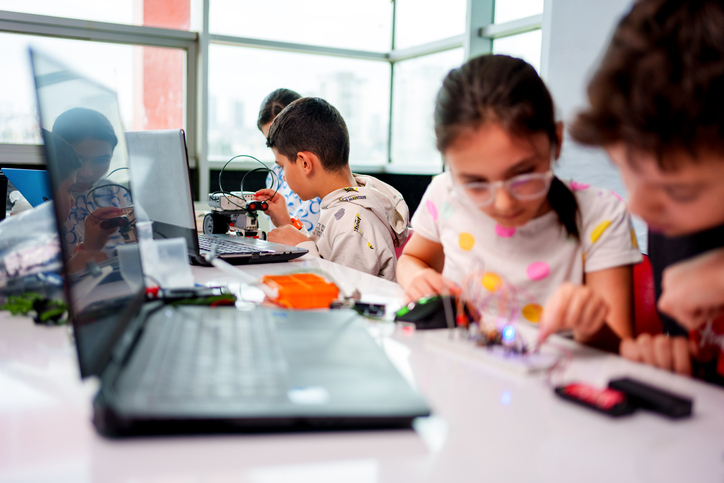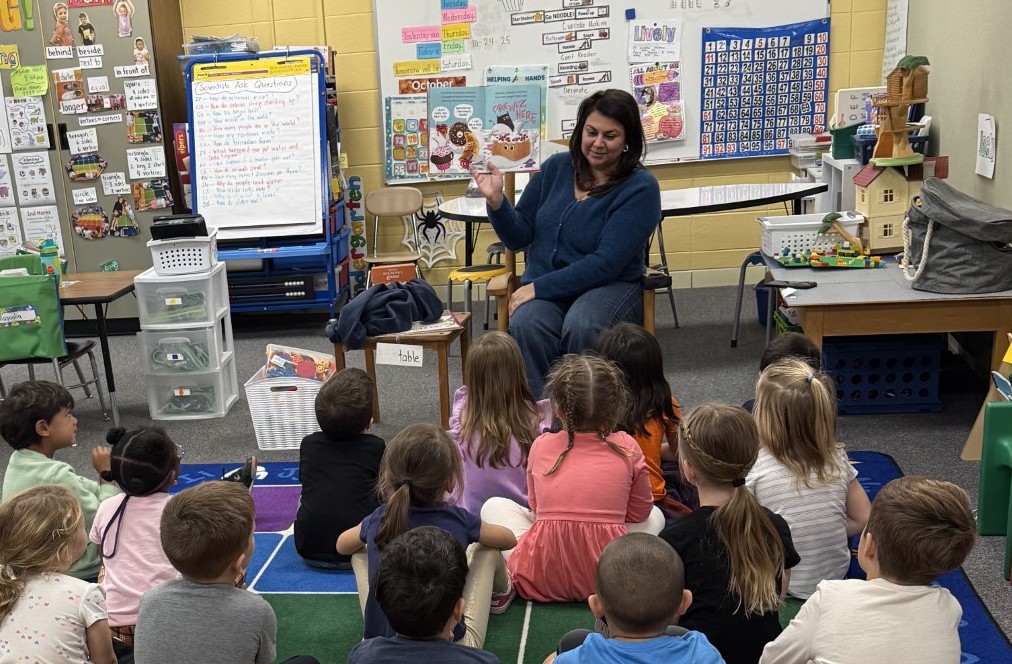Best Free Hour of AI/Hour of Code Lessons & Activities
These Hour of AI/Hour of Code lessons and activities are free and easy to use since most don’t require an account or login

This article was updated December 5, 2025.
What happened to the Hour of Code?
Since 2013, Hour of Code activities have been helping educators worldwide to teach coding and computer science principles to K-12 students during Computer Science Education Week every December (this year December 8-14).
Now, with the rapid penetration of artificial intelligence into technology, communications, industry, and education, it’s time to build on the success of Hour of Code. The Hour of AI is upon us.
The Hour of AI follows the principles of the Hour of Code -- that any educator can teach about artificial intelligence with the right guidance. Students will learn to understand and create with AI instead of simply being passive consumers of it.
Fortunately, it’s not an either-or choice. While the Hour of AI has claimed its place in Computer Science Education Week, there are still many fine Hour of Code lessons and activities to choose from.
Whether Hour of AI or Hour of Code, the purpose is the same: To get kids excited about computer science via brief, enjoyable lessons, typically based on digital games and apps. However, you can also teach AI, coding, STEM, and computer logic with “unplugged” analog lessons, some of which are listed here.
Most of the following free Hour of AI/Hour of Code lessons and activities do not require an account or login. All are easy to access and can enrich your classroom’s computer science curriculum all year round.
Tools and ideas to transform education. Sign up below.
Hour of AI Lessons and Activities
CS For All Hour of AI
Everything educators need to know about the Hour of AI, including a wealth of print and digital resources, activities, and a how-to guide for hosting an Hour of AI event.
Digital Schoolhouse Computer Science Workshops
The UK-based non profit Digital Schoolhouse provides a robust set of free workshops for teaching computer science topics from Big Data to Ultimate Games Careers. Each workshop includes a teacher’s guide, PowerPoint class presentation, exercises, and additional digital materials.
Digital Schoolhouse Playful Computer Activities
Computer activities don’t always require a computer. Use this terrific assortment of creative lessons to teach computer-related concepts such as computational thinking, binary language, game design, and more, all packaged with amusing characters, puzzles, and logic problems. The carefully designed materials include everything teachers need to bring the lesson to the classroom—except the Playdough, of course!
Digital Schoolhouse Hour of AI: AI unplugged
How does generative AI work? This excellent unplugged AI lesson answers this question and explains the basics of generative AI -- no digital technology required! Included are a teacher guide, worksheets, and an editable PowerPoint presentation. For students nine years and older.
Raspberry Pi Experience CS Curriculum
A free computer science curriculum that’s designed to be incorporated into core content, such as math, science, social studies, and language arts. Ten standards-aligned units cover subjects including weather, art, music, and ecology, and provide lesson plans, slide decks, assessments, and other teaching resources. Grades 4-8. Free account required.
ISTE Artificial Intelligence Lessons
Available in English, Spanish, and Arabic, these hands-on AI project guides help teachers implement a variety of AI lessons in the classroom, from unplugged to chatbots and video games. Education email required for lesson download.
Mix & Move with AI
From the innovative nonprofit Code.org, this lesson brings dance, music, and AI together to teach kids 8-18 years old how to combine creativity, coding, and AI. Includes educator’s guide, lesson plan, classroom slide deck, and prep video.
Coding with AI
Is it possible to use AI for learning a subject rather than cheating? Code.org says yes. Its Coding With AI program is a five-lesson course exploring how kids can tap into AI as a learning support and resource. Each standards-based lesson includes a teacher’s guide, agenda, activities, and assessments. Integrated with Google and Microsoft for easy login and digital sharing.
Hour of Code Lessons and Activities
Blockly: Educational Games that Teach Programming
Simple and elegant game-based coding site that allows novice users to quickly jump in and start learning to code, first with blocks, then with text. Each of the eight game categories introduces an important coding concept, from loops and conditionals to functions. Shareable links promote collaboration. No account required.
Code with Anna and Elsa
From code.org, this step-by-step guide allows students to code a fun animation featuring the popular characters from Frozen. Explanatory videos and tooltips help users navigate and complete each step, while the “run” command shows them if they got it right. A free account is not required, but creating an account allows teachers to assign and track work.
Tinkercad Codeblocks
Block-based coding is a great start for aspiring coders of any age. First create a free account, then explore tutorials on shapes, 3D movement, templates, and much more. Once students have gained some experience, they can try remixing template code, or even create their own.
Khan Academy: Hour of Code
Khan Academy’s interactive videos, challenges, and projects make it easy to dive into STEM teaching and learning coding. The clean, easy-to-navigate interface provides step-by-step guidance and resources for coding drawings, webpages, databases, and more. Create a free account to save resources and document your progress. Not sure where to begin? Consult the teachers’ guides, which cover programming with JavaScript, HTML, CSS, SQL, and more. Integrates with Google Classroom.
The Tech Interactive: Computational Thinking
Computational thinking is not just for coding. Learn how the four elements of computational thinking—decomposition, pattern recognition, abstraction, and algorithms—can be applied not only to coding, but also to problem-solving across the curriculum. Then check out the CT K12 lessons and activities here.
Dr. Seuss’ The Grinch Coding Lessons
Twenty coding lessons of increasing difficulty feature the Grinch and scenes from the beloved book.
Hour of Code: Simple Encryption
Previously the domain of militaries and spies, encryption is now an important part of modern life for anyone who uses a digital device. This simple encryption puzzle starts at the lowest level and builds in complexity. Fun and educational.
Intro to App Lab
Create your own apps with App Lab’s tools and guidance.
Girls Who Code
Free JavaScript, HTML, CSS, Python, Scratch, and other programming lessons that students, parents, and educators can complete at home.
MIT App Inventor
Users create their own mobile app with a blocks-based programming language. Need help? Check out the coding tutorials here.
Microsoft Make Code: Hands-on computing education
Fun projects utilizing both block and text editors for students of all ages. No account needed.
Scratch: Get Creative with Coding
No account needed to start coding new worlds, cartoons, or flying animals.
Scratch Jr
Nine activities introduce kids to coding with the programming language Scratch Jr., which lets children aged 5-7 create interactive stories and games.
Tech & Learning editor and contributor since 2010, Diana is dedicated to ferreting out the best free and low-cost tech tools for teachers.
